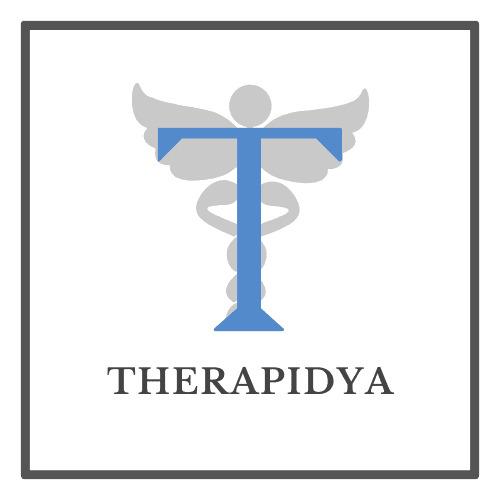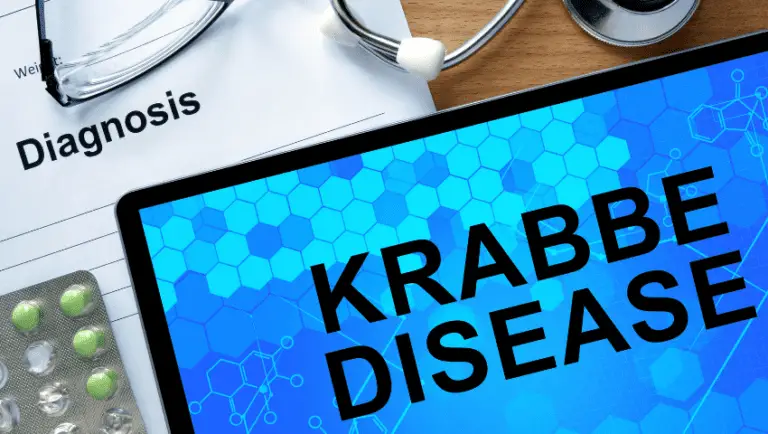Anxiety & Panic Attacks .. A Very Simplified Guide 2023
Anxiety and Panic Attacks are common mental disorders that affect a large population worldwide. They are characterized by excessive worrying, fear, and physical symptoms such as rapid heartbeat, sweating, and trembling. These disorders can significantly impair daily life and relationships.
In this article, we will discuss Anxiety and Panic Attacks in a simple and easy to understand way. We will explore the causes, symptoms, and treatment options available for these conditions. Our goal is to provide informative and practical advice to help those suffering from Anxiety and Panic Attacks to better manage their symptoms and improve their mental wellbeing.
About Anxiety & Panic Attacks
Anxiety and panic attacks are not the same thing, and getting the right diagnosis is important before treatment. Anxiety is a chronic, ongoing and excessive level of worry, while panic attacks occur abruptly and for no apparent reason. Symptoms of anxiety can include frequent feelings of worry, a rapid heart rate, trembling, fatigue, trouble concentrating, and avoidance of circumstances that might trigger severe anxiety. Panic attacks cause fear that isn’t normal and make the person feel bad. They usually last for about an hour. Panic attacks can be treated by mental health professionals with talk therapy and medications such as antidepressants and benzodiazepines, which have been shown to help with both chronic anxiety and panic disorder.
Only about 30% of patients with panic disorder also have agoraphobia—fear towards certain places and often avoid situations that might cause an individual to panic and make them feel trapped, helpless or embarrassed. Treatment of anxiety or panic attacks often involves specific FDA-approved medications that act in the brain to reset neurotransmitters that are thought to be involved with fear. Many of the same types of medications have been shown to work for both generalized anxiety and panic disorder. These include selective serotonin reuptake inhibitors (SSRIs), serotonin-norepinephrine reuptake inhibitors (SNRIs), tricyclic antidepressants (TCAs), benzodiazepines (BZDs), and monoamine oxidase inhibitors (MAOIs). Talk therapy is often combined with medications for both anxiety and panic disorders, and therapy may continue for a year or more after symptom control.
Causes of Anxiety & Panic Attacks
Anxiety and panic attacks are common medical conditions that affect millions of people around the world. While anxiety is a chronic and ongoing condition characterized by excessive worry and nervousness about normal life events, panic attacks are more sudden and abrupt, often occurring without warning and leading to intense fear and a fight-or-flight response. The exact causes of anxiety and panic attacks are not fully known, but may be due to a combination of genetic, environmental, and lifestyle factors. Research suggests that miscommunications between neurotransmitters and receptors in the brain, traumatic life experiences, and family history may contribute to the development of these conditions. Treatments for anxiety and panic attacks involve a combination of FDA-approved medications and talk therapy to reset neurotransmitters and manage symptoms.
How is Anxiety & Panic Attacks Diagnosed?
Anxiety and panic attacks are two distinct but related conditions that can cause significant distress for individuals who experience them. Symptoms of anxiety can include frequent, excessive feelings of worry or nervousness, rapid heart rate, trouble concentrating, and avoidance of certain circumstances. Panic attacks, on the other hand, occur abruptly and often without warning, and can include symptoms such as chest pain, lightheadedness, and the feeling of impending doom.
Diagnosing these conditions often involves a combination of clinical assessment, physical examination, and laboratory tests. Blood tests may be used to rule out underlying medical conditions that could be contributing to symptoms, such as thyroid disease or heart problems. Imaging tests, such as MRI or CT scans, may be ordered to evaluate the brain for abnormalities that could be causing symptoms. In some cases, a biopsy may be needed to confirm a diagnosis.
The accuracy of these tests can vary depending on the individual and the underlying cause of their symptoms. For example, blood tests may be more useful for ruling out specific medical conditions rather than confirming a diagnosis of anxiety or panic disorder. Imaging tests may be more helpful in identifying structural abnormalities or other physical changes in the brain that could be contributing to symptoms. Biopsies are generally only used in rare cases where other diagnostic tests have been inconclusive.
Overall, a thorough clinical evaluation including a comprehensive medical history and physical examination is often the most effective way to diagnose anxiety or panic disorder. This may involve asking the individual about their symptoms and any other factors that could be contributing to their condition, such as stress or trauma. In some cases, a mental health assessment may be required to fully evaluate the individual’s symptoms and determine the best course of treatment.
It’s important to note that while accurate diagnosis is essential for effective treatment, there is no single test or procedure that can definitively diagnose anxiety or panic disorder. These conditions are complex and can involve a range of physical, psychological, and social factors, making thorough evaluation and ongoing monitoring crucial for optimal care.
Should i meet a doctor regarding Anxiety & Panic Attacks?
When to See a Doctor for Anxiety and Panic Attacks
If you’re experiencing symptoms of anxiety or panic attacks, it’s important to consult with a medical professional to determine if you have an underlying medical condition. Here are some red flags or warning signs that indicate the need for urgent medical attention:
– Chest pain or pressure
– Shortness of breath
– Difficulty breathing
– Fainting or lightheadedness
– Rapid heartbeat or palpitations
– Profuse sweating or shivering
– Sudden weakness or numbness in limbs
– Severe or recurring panic attacks
If you’re experiencing any of these symptoms, seek medical attention immediately. It’s important to note that these symptoms may be related to other medical conditions, such as heart or lung disease.
Here is a list of common anxiety and panic attack symptoms that can help you decide if you should go to the doctor:
– Frequent worry, nervousness or anxiousness
– Rapid heart rate and breathing
– Sweating or trembling
– Muscle tension or aches
– Fatigue or trouble concentrating
– Stomach upset, nausea or diarrhea
– Avoidance of situations that may trigger anxiety or panic
– Sudden feeling of doom or a need to escape
If you’re experiencing any of these symptoms, and they are interfering with your daily life, it’s important to consult with a medical professional. Don’t hesitate to seek help if you’re worried about your symptoms.
In conclusion, if you’re experiencing symptoms of anxiety or panic attacks, it’s important to consult with a medical professional to determine if you have an underlying medical condition that requires treatment. If you’re experiencing any red flags or warning signs, seek medical attention immediately. Don’t hesitate to seek help if you’re worried about your symptoms.
References
This article was made with the help of the following Sources
Panic Disorder: When Fear Overwhelms. National Institute of Mental Health (NIMH). Accessed June 20, 2017 at https://www.nimh.nih.gov/health/publications/panic-disorder-when-fear-overwhelms/index.shtml
Pharmacotherapy for panic disorder with or without agoraphobia in adults. Up to Date. May 2017. Accessed June 20, 2017 https://www.uptodate.com/contents/pharmacotherapy-for-panic-disorder-with-or-without-agoraphobia-in-adults
Panic Attack vs. Anxiety Attack: 6 Things to Know. Jan. 11, 2017. Accessed June 20, 2017 at http://healthblog.uofmhealth.org/wellness-prevention/panic-attack-vs-anxiety-attack-6-things-to-know
Treating Panic Disorder A Quick Reference Guide. Accessed June 20, 2017 at http://psychiatryonline.org/pb/assets/raw/sitewide/practice_guidelines/guidelines/panicdisorder-guide.pdf
Panic Disorders. BMJ Best Practice. April 6, 2017. Accessed June 20, 2017 at http://bestpractice.bmj.com/best-practice/monograph/121.html
Locke A, Kirst N, Shultz C. Diagnosis and Management of Generalized Anxiety Disorder and Panic Disorder in Adults. Am Fam Physician. 2015 May 1;91(9):617-624. Accessed June 20, 2017 at http://www.aafp.org/afp/2015/0501/p617.html
Mirtazapine product labeling. Drugs.com. Accessed Nov. 7, 2019 https://www.drugs.com/ppa/mirtazapine.html
Practice Guideline for the Treatment of Patients With Panic Disorder, 2nd Edition. Working Group on Panic Disorder. American Psychiatric Association. January 2009. Accessed June 20, 2017 at http://psychiatryonline.org/pb/assets/raw/sitewide/practice_guidelines/guidelines/panicdisorder.pdf
Understanding the Facts – Panic Disorder and Agoraphobia. Anxiety and Depression Association of America.
Imipramine product labeling. Drugs.com. Accessed Nov. 7, 2019 at https://www.drugs.com/ppa/imipramine.html
American Psychiatric Association (APA). Treating Panic Disorder: A Quick Reference Guide. Accessed Nov. 3, 2019 at https://psychiatryonline.org/pb/assets/raw/sitewide/practice_guidelines/guidelines/panicdisorder-guide.pdf
Stein M, Goin M, Pollack M, et al. Work Group on Panic Disorder. Practice Guideline for the treatment of patients with panic disorder: Second edition. Am J Psychiatry 2009;166. https://psychiatryonline.org/pb/assets/raw/sitewide/practice_guidelines/guidelines/panicdisorder.pdf
Buspirone product labeling. Drugs.com. Accessed Nov. 7, 2019 at https://www.drugs.com/ppa/buspirone.html








